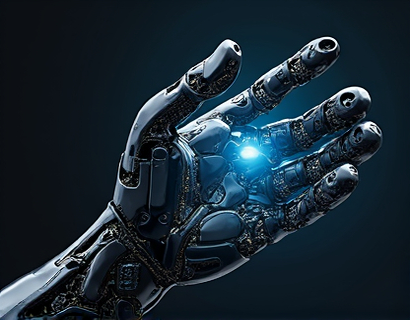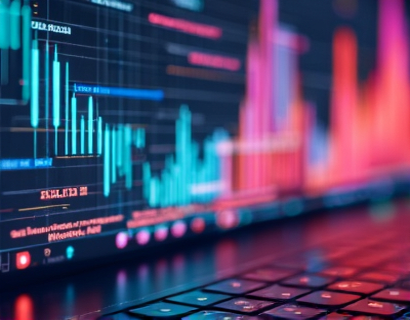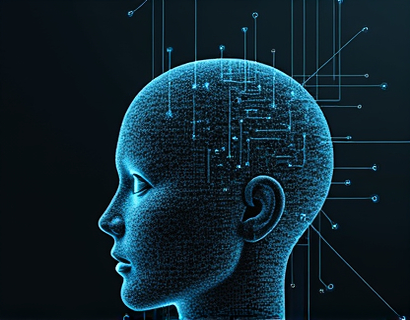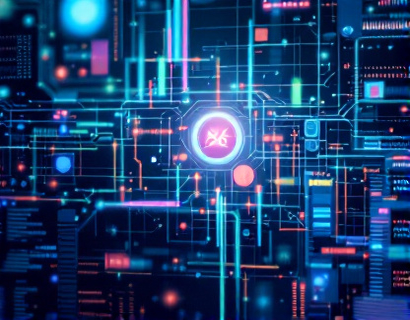Decentralized Organization Powerhouse: Unleashing the Potential of Advanced Software for Optimal Governance and Collaboration
In the rapidly evolving landscape of digital governance and operations, the concept of decentralized organizations has emerged as a transformative force. This guide delves into the intricacies of building universal decentralized organizations using advanced software, focusing on fostering seamless collaboration, transparency, and efficiency. Ideal for enthusiasts and professionals alike, this article aims to provide a comprehensive understanding of the tools and strategies necessary to harness the full potential of decentralized systems.
Understanding Decentralized Governance
Decentralized governance refers to a system where decision-making power is distributed among various nodes or participants, rather than being concentrated in a central authority. This approach leverages blockchain technology and smart contracts to create transparent, secure, and resilient organizational structures. Unlike traditional hierarchical models, decentralized governance empowers individuals and groups to collaborate and make decisions collectively, reducing the risk of single points of failure and enhancing overall system robustness.
Key Benefits of Decentralized Organizations
The adoption of decentralized governance models offers numerous advantages. Firstly, transparency is a cornerstone of decentralized systems, as all transactions and decisions are recorded on a public ledger, accessible to all participants. This level of openness builds trust and accountability, crucial elements for any organization. Secondly, decentralized organizations are inherently more resilient, as the distribution of power and resources means that the failure of a single component does not compromise the entire system. Lastly, the collaborative nature of decentralized governance fosters innovation and adaptability, as diverse perspectives and expertise contribute to problem-solving and decision-making processes.
Challenges in Implementing Decentralized Governance
Despite its benefits, implementing decentralized governance is not without challenges. One of the primary obstacles is the technical complexity involved in setting up and maintaining decentralized systems. This requires a deep understanding of blockchain technology, cryptography, and distributed systems. Additionally, achieving consensus among diverse stakeholders can be difficult, especially when interests and priorities diverge. Regulatory uncertainties also pose a significant challenge, as the legal framework for decentralized organizations is still evolving in many jurisdictions.
Advanced Software for Decentralized Organizations
To overcome these challenges and build effective decentralized organizations, advanced software solutions are essential. These tools provide the necessary infrastructure and functionalities to support seamless collaboration, transparency, and efficiency. Key components of such software include decentralized applications (dApps), smart contracts, and user-friendly interfaces that bridge the gap between technical complexity and user experience.
Decentralized Applications (dApps)
Decentralized applications, or dApps, are applications that run on a blockchain or a peer-to-peer network, rather than on a central server. They leverage the decentralized nature of these networks to provide services that are resistant to censorship and control by any single entity. dApps can serve various purposes, from voting systems and supply chain management to decentralized finance (DeFi) platforms. By using dApps, organizations can automate processes, reduce intermediaries, and ensure that all transactions are transparent and verifiable.
Smart Contracts
Smart contracts are self-executing contracts with the terms of the agreement directly written into code. They automatically enforce and execute the terms of a contract when predefined conditions are met, eliminating the need for intermediaries and reducing the risk of fraud. In the context of decentralized organizations, smart contracts can be used to manage governance processes, such as proposal voting, funding allocation, and membership management. This not only streamlines operations but also ensures that decisions are made transparently and fairly.
User-Friendly Interfaces
To make decentralized systems accessible to a broader audience, user-friendly interfaces are crucial. These interfaces simplify the interaction with complex blockchain technologies, allowing users without technical expertise to participate effectively. Features such as intuitive dashboards, step-by-step guides, and real-time notifications can significantly enhance the user experience, making decentralized governance more inclusive and user-friendly.
Building a Universal Decentralized Organization
Creating a universal decentralized organization requires a strategic approach that integrates the right software tools and best practices. Here’s a step-by-step guide to help you build a robust and efficient decentralized organization:
Step 1: Define Your Vision and Goals
The first step is to clearly define the purpose and objectives of your decentralized organization. What problems do you aim to solve? Who are your target users? What values will guide your organization? A well-defined vision and set of goals will serve as the foundation for all subsequent decisions and actions.
Step 2: Choose the Right Blockchain Platform
Selecting the appropriate blockchain platform is critical. Consider factors such as scalability, security, transaction costs, and community support. Popular platforms like Ethereum, Binance Smart Chain, and Polkadot offer different features and advantages. Ethereum, for instance, is well-suited for complex smart contracts and dApps, while Binance Smart Chain offers faster transaction speeds and lower fees.
Step 3: Design the Governance Structure
The governance structure determines how decisions are made within the organization. Common models include delegated proof of stake (DPoS), liquid democracy, and autonomous organization (DAO) models. Each has its pros and cons, and the choice should align with your organization’s goals and stakeholder dynamics. For example, a DAO model allows for decentralized decision-making through token-based voting, ensuring that all participants have a say in the organization’s direction.
Step 4: Develop Smart Contracts for Core Functions
Smart contracts are the backbone of decentralized operations. Develop contracts for key functions such as membership management, proposal voting, funding allocation, and dispute resolution. Ensure that these contracts are audited for security and bug-free execution. Utilizing established frameworks and best practices can help mitigate risks and ensure reliability.
Step 5: Create User-Friendly Interfaces
To encourage widespread adoption, develop user-friendly interfaces that simplify interaction with the decentralized system. This includes creating intuitive dashboards, clear documentation, and educational resources. Consider using web3 frameworks like React Web3 Crate or Etherscript to build seamless user experiences.
Step 6: Foster Community Engagement
Building a strong community is essential for the success of a decentralized organization. Engage with potential users through social media, forums, and meetups. Provide transparent communication about the organization’s progress, challenges, and future plans. Encourage feedback and participation to foster a sense of ownership and commitment among community members.
Step 7: Monitor and Adapt
Decentralized organizations must be agile and responsive to changing conditions. Continuously monitor the performance of your system, gather user feedback, and be prepared to make adjustments as needed. Stay informed about developments in blockchain technology and regulatory landscapes to ensure your organization remains compliant and competitive.
Case Studies and Real-World Applications
Several organizations have successfully implemented decentralized governance models, demonstrating the practical applications and benefits of advanced software in this domain.
MakerDAO
MakerDAO is a decentralized autonomous organization (DAO) that manages the Maker Protocol, a platform for creating and managing stablecoins called DAI. MakerDAO uses a combination of smart contracts and a token-based governance system to make decentralized decisions on protocol upgrades, collateral management, and emergency measures. This model has enabled MakerDAO to operate transparently and resiliently, with a strong community of stakeholders involved in governance.
OpenSea
OpenSea is a decentralized marketplace for digital assets, built on the Ethereum blockchain. It utilizes smart contracts to facilitate the buying, selling, and trading of NFTs and other digital goods. OpenSea’s governance is managed through a DAO, allowing token holders to propose and vote on changes to the platform. This decentralized approach has enabled OpenSea to grow rapidly and become a leading marketplace in the NFT space.
Future Trends and Innovations
The field of decentralized governance and operations is rapidly evolving, with several emerging trends and innovations poised to shape the future:
Interoperability
Interoperability between different blockchain platforms is becoming increasingly important. Solutions like Polkadot and Cosmos aim to create a network of interconnected blockchains, enabling seamless communication and asset transfer across different ecosystems. This will enhance the scalability and versatility of decentralized organizations.
Enhanced User Privacy
Privacy concerns remain a significant barrier to widespread adoption. Advanced cryptographic techniques, such as zero-knowledge proofs and confidential transactions, are being integrated into blockchain platforms to enhance user privacy without compromising transparency. These innovations will make decentralized systems more appealing to a broader audience.
Regulatory Clarity
As decentralized organizations gain traction, there is a growing need for clearer regulatory frameworks. Collaboration between regulators, technologists, and industry stakeholders is essential to create policies that support innovation while protecting consumers. Increased regulatory clarity will foster greater confidence and adoption of decentralized governance models.
Conclusion
Decentralized governance and operations represent a paradigm shift in how organizations can be structured and managed. By leveraging advanced software tools and best practices, it is possible to build universal decentralized organizations that are transparent, resilient, and collaborative. While challenges remain, the potential benefits—such as enhanced security, reduced costs, and increased innovation—make the pursuit of decentralized governance an exciting and worthwhile endeavor. As the technology continues to evolve, the future of decentralized organizations looks promising, offering new opportunities for individuals and communities to collaborate and thrive.










































